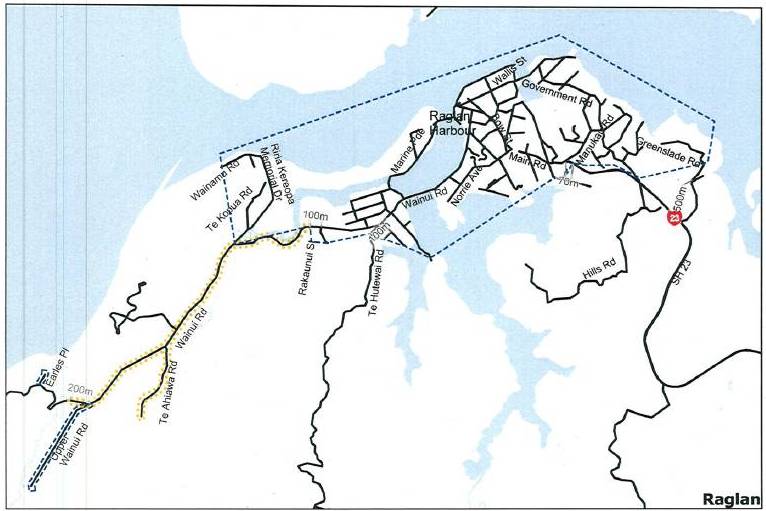
Raglan speed limits are being reviewed with the release of a discussion document by Waikato District Council. The 50 kph Raglan area remains unchanged, along with the 80 kph area on Wainui Road from Rakaunui St to just past Upper Wainui Rd. Upper Wainui Rd and Earles Place remain as 50 kph areas, along with Whaanga Rd and Calvert Rd in Whale Bay. While the 50 kph area remains unchanged, an 80 kph area is proposed on Wainui Road from Rakaunui St to just past Upper Wainui Rd. Upper Wainui Rd and Earles Place are shown as 50 kph on the plan, along with Whaanga Rd and Calvert Rd in Whale Bay.
Te Mata remains as a 70 kph area with the Church Lane area at 50 kph. Waitetuna is shown as an 80 kph zone. Although Te Uku is not included as it is on a State Highway, that area is being looked at separately by the NZ Transport Agency. The only other change is around Whatawhata where NZTA also have a plan for an extra 3km at 80kph on the western side of the existing limit.
Written submissions on the proposal are invited from Monday 20 February 2012 and must be received by 4pm Friday 23 March 2012. Full details are available here.
Please send your submissions to Maria Edgar, Corporate Planner, Waikato District Council, Private Bag 544, Ngaruawahia 3742, Telephone 07 824 8633.
Aren’t these the limits we already have? It seems to me the only changes proposed are outside Whaingaroa, where NZTA also have a plan for an extra 3km at 80kph this side of the existing limit.
I mean at Whatawhata.
I’m with John, aren’t these identical to what we currently have?
I guess I was thinking about the speeds people drive on the Whaanga Road. Probably the WDC review came about because they passed a new bylaw and that the required them to ‘review’ the speed limits. Anyway they are now open for public consultation, so you can submit: 1) supporting what is proposed (the status quo), 2) advocate lower speeds, 3) advcoate higher speeds, 4) changes in the designated areas, etc.
Rodger